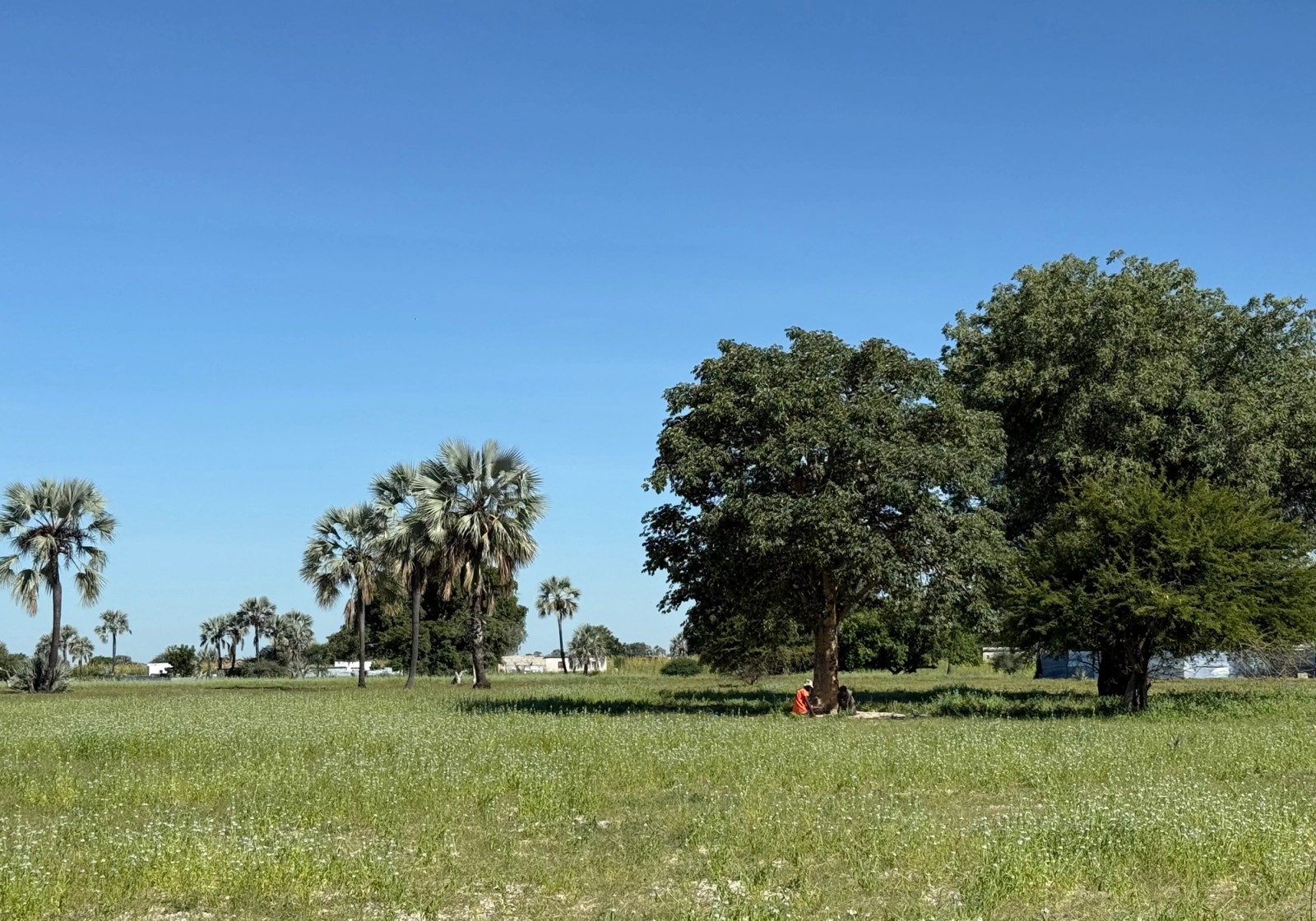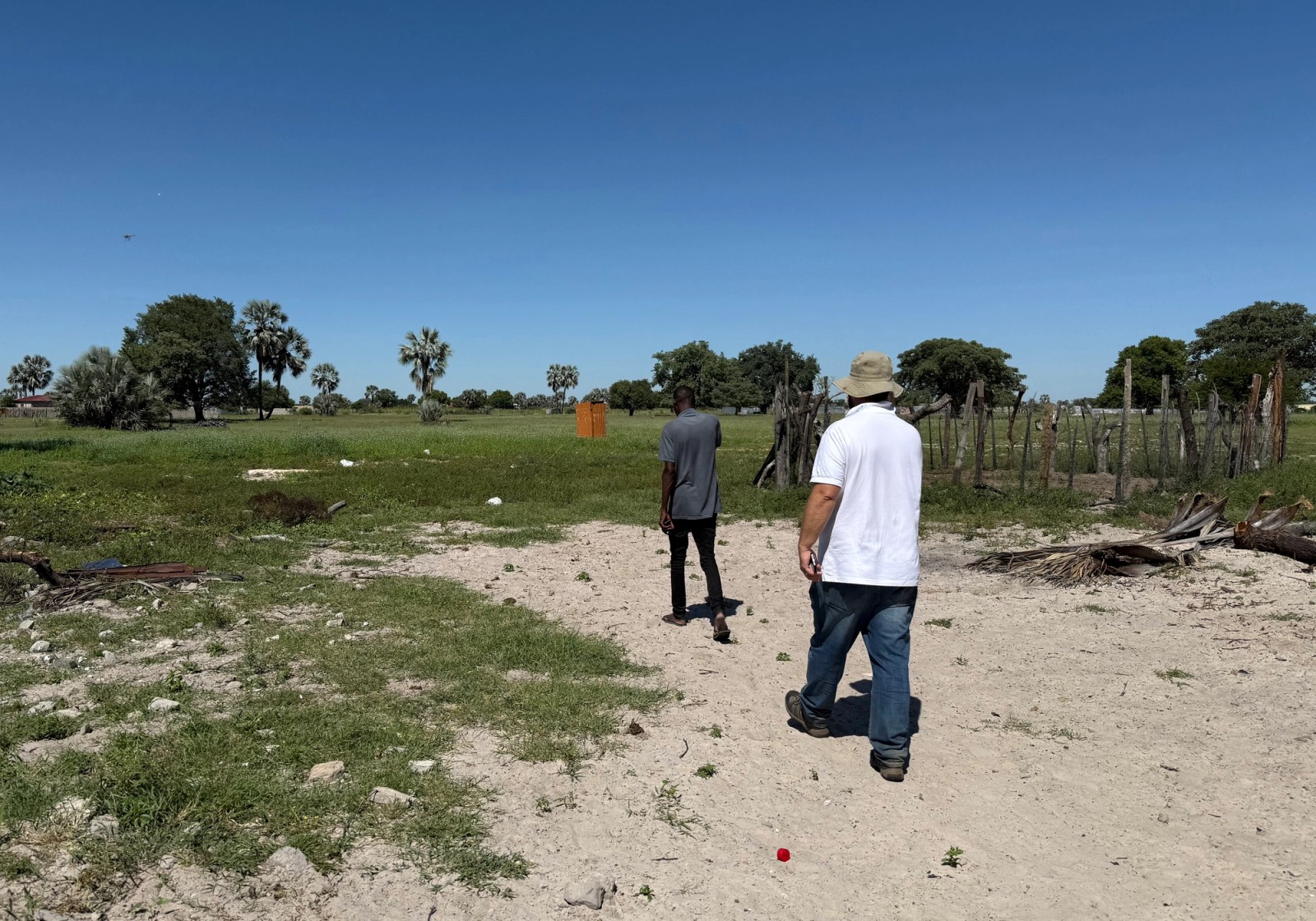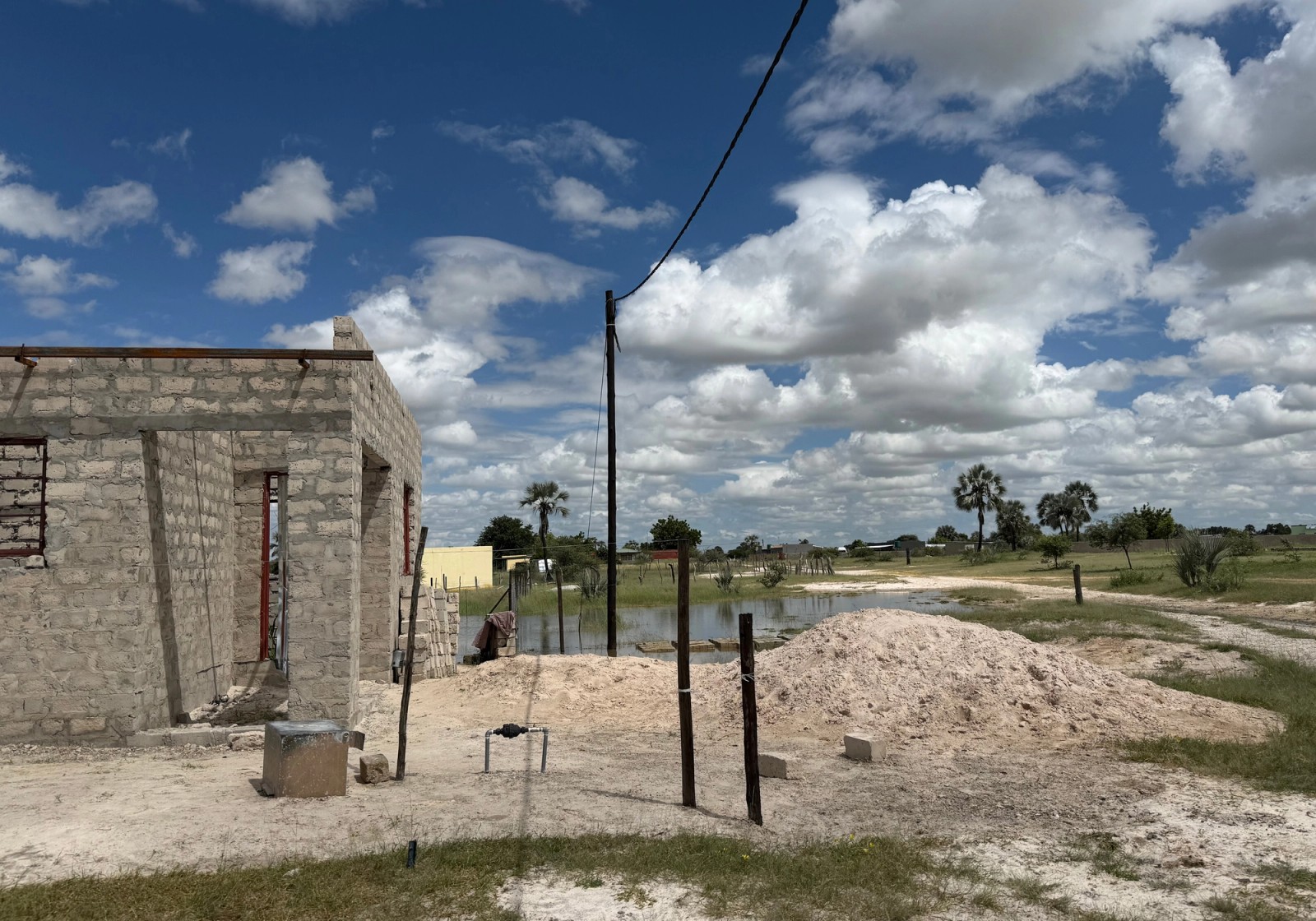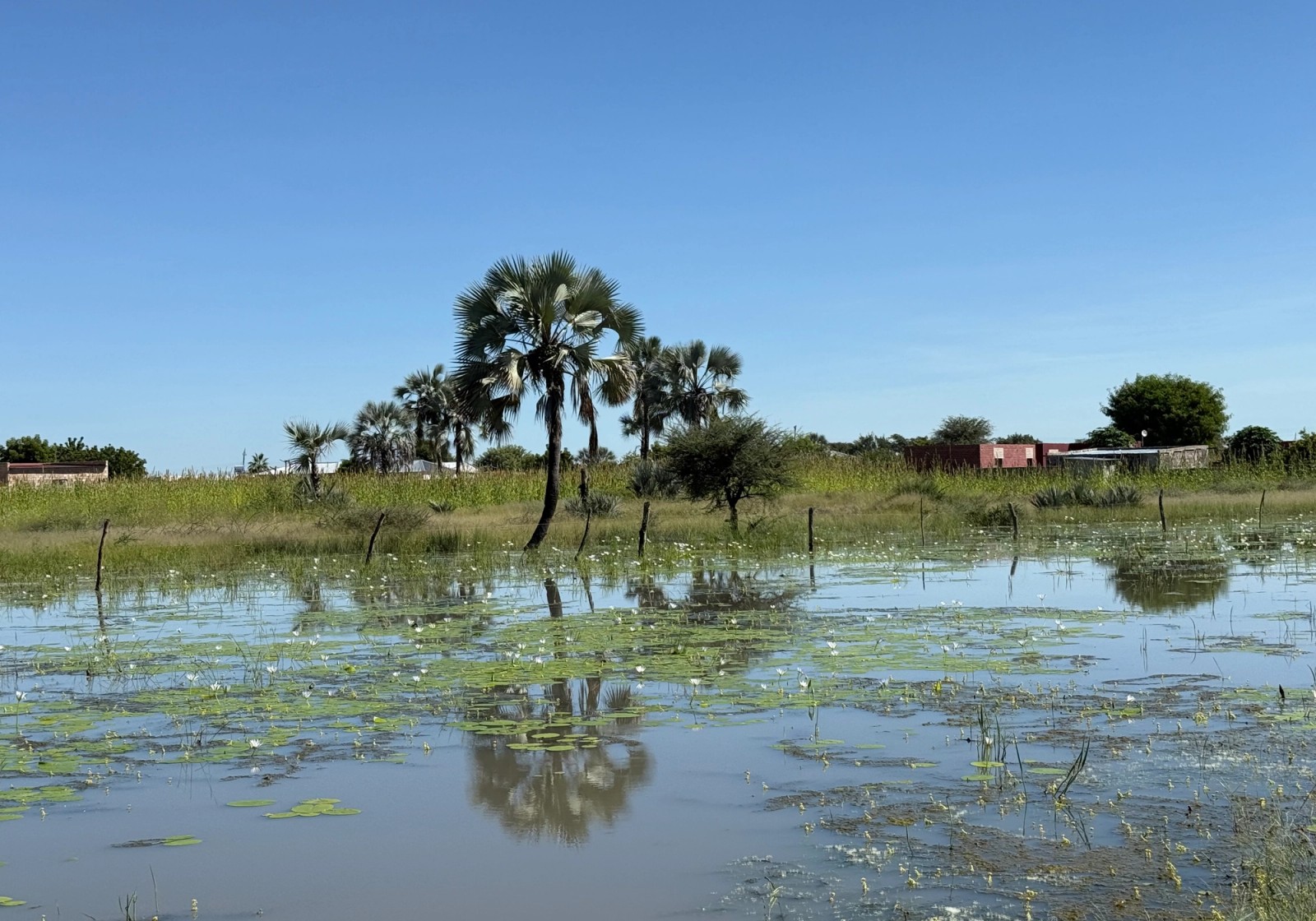Site Visit in Oniipa, April 7-10, 2025
Last week, members from our Oniipa project team (environmental engineer Jonny Harris, director at Isidima, and landscape architect Martin Knuijt, founding partner at OKRA) were on site in Northern Namibia together with members from our implementation partner Development Workshop Namibia for public engagement meetings, workshops, and feasibility studies. They identified the ideal location for the construction of the wicking bed, taking soil samples and evaluating different site conditions. The wicking bed system's purpose, as well as the economic and ecological benefits were discussed with existing land owners and future residents, who showed great interest.

Wicking beds are a low-cost technology that provides multiple benefits, including:
• mitigate droughts
• alleviate sewer systems
• increase food security
• mitigate heat and improve climate comfort
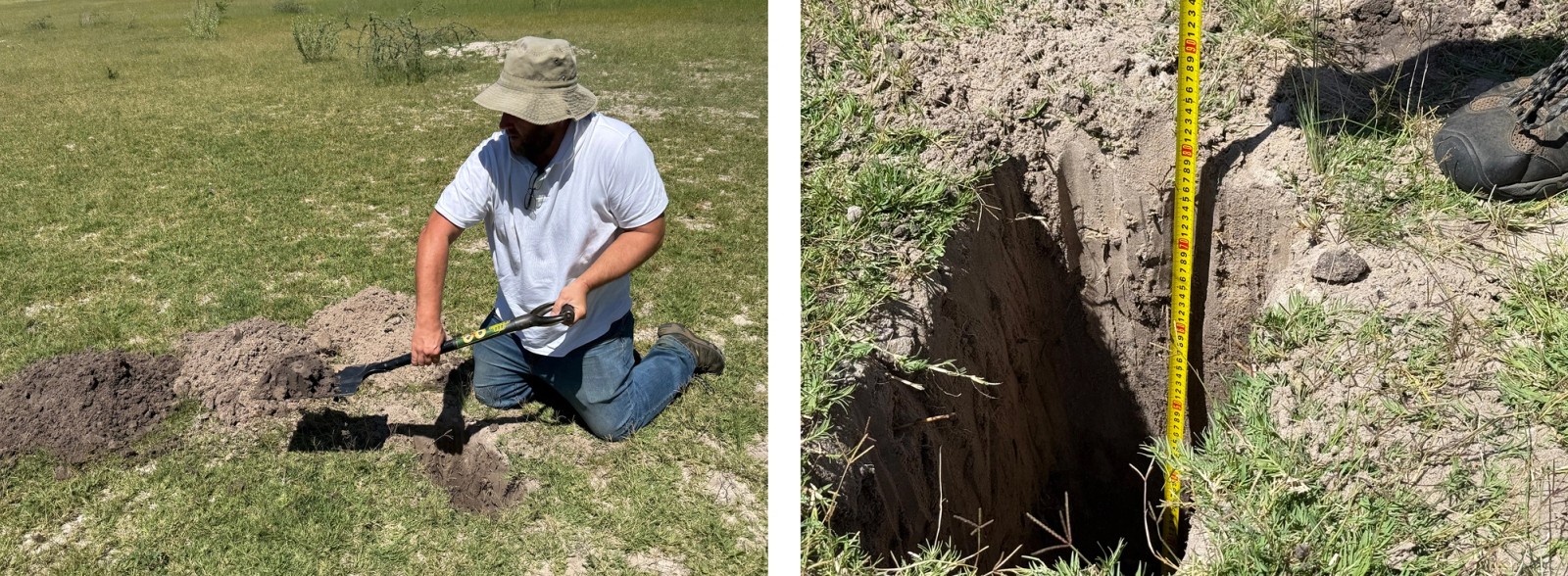
Our wicking bed pilot project will be implemented by the end of 2025, followed by a two-year monitoring and evaluation period. The system has great potential to be scaled up and implemented across the new neighborhood, as well as replicated elsewhere in the region and in our partners’ other projects across Namibia and beyond.
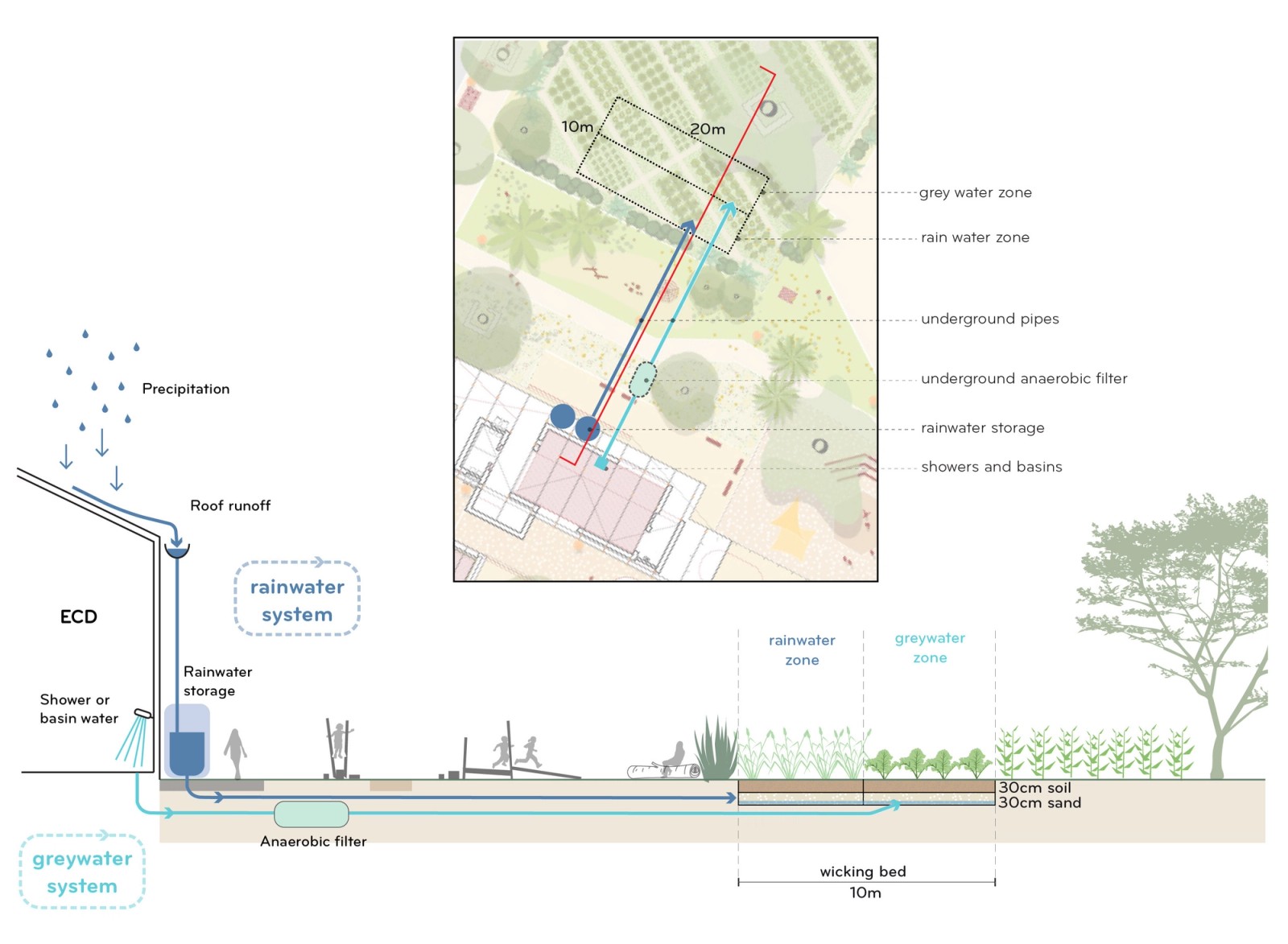
Wicking beds are shallow-lined structures filled with sand to store surplus water, allowing it to slowly “wick” to the root zone of vegetation growing in the topsoil above. Soil, roots, plants, and microorganisms remove impurities and excess nutrients, making the water safe for irrigation. Excess rainwater or domestic greywater can be infiltrated into wicking beds, which can irrigate land, including agricultural and recreational green spaces.
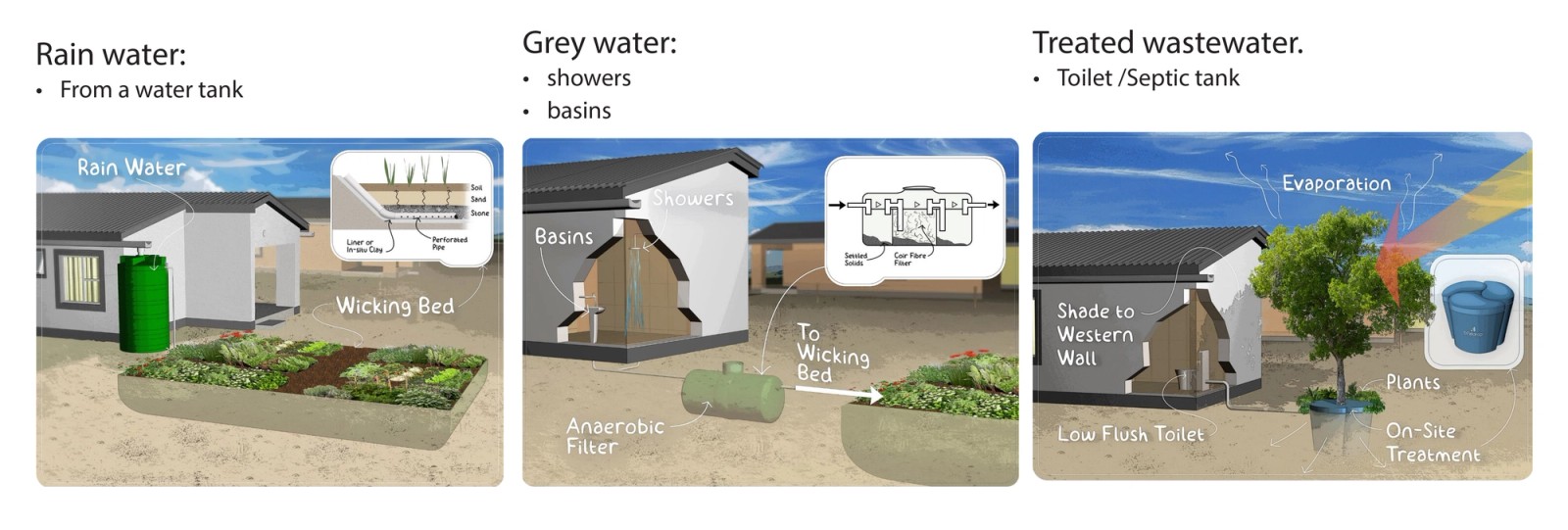
In our Oniipa project, domestic rainwater, as well as greywater from the community hub and private homes, can be fed into the wicking beds. Especially the shared courtyards are well-suited to implement this technology. Depending on the water source, anaerobic filters need to be included. Black water cannot be connected to wicking beds. However, it can also be treated on-site using treatment tanks.
Funding
The pilot project is funded by the Netherlands Enterprise Agency (the Dutch Ministry of Economic Affairs) and approved with a permit by Oniipa Town Council.

